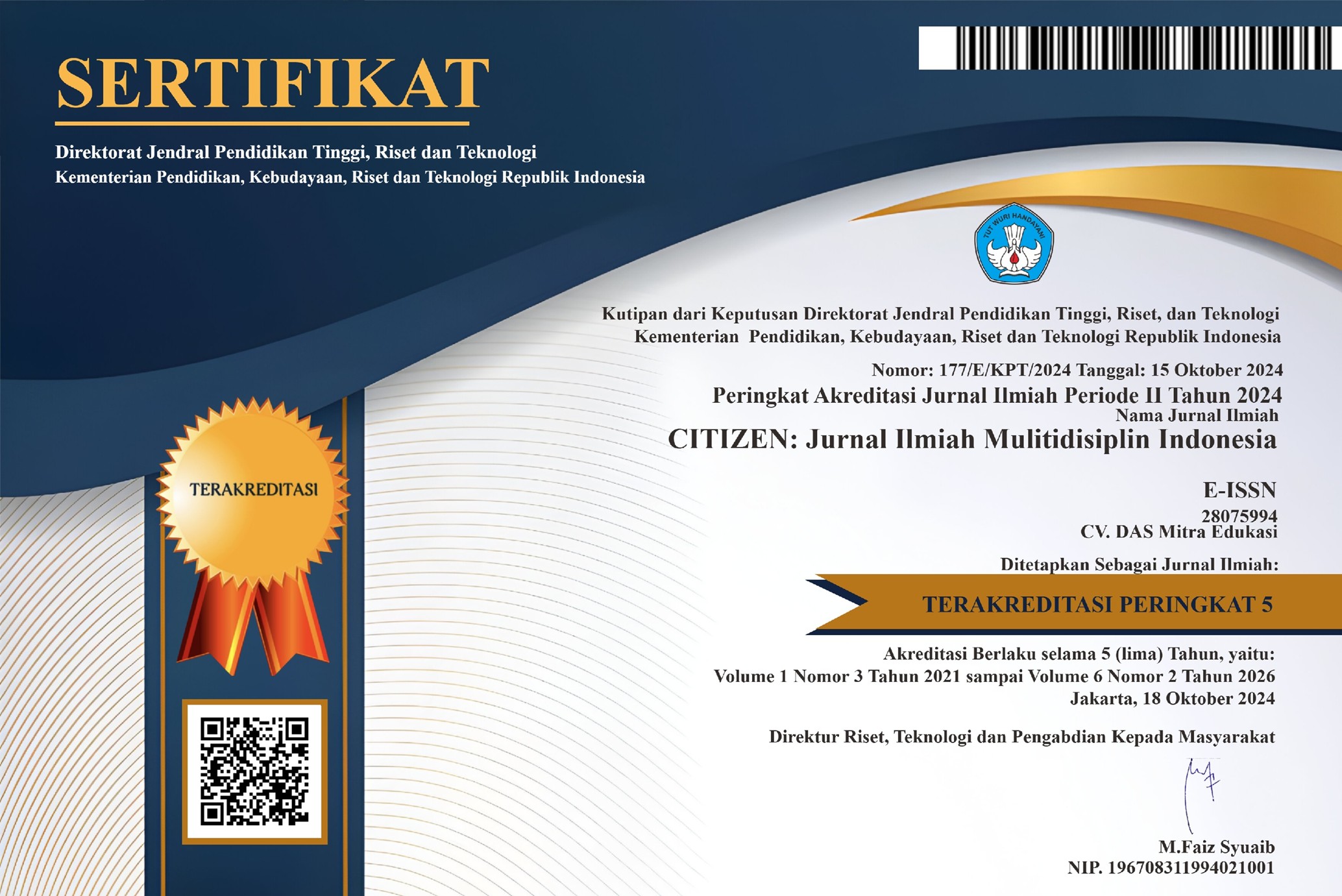ANALISIS DAN SIMULASI KECEPATAN LALU-LINTAS PADA SIMPANG JALAN MENGGUNAKAN PERANGKAT LUNAK PTV VISSIM STUDENT VERSION (STUDI KASUS: SIMPANG BERGOTA, KOTA SEMARANG)
DOI:
https://doi.org/10.53866/jimi.v3i3.249Abstract
One of the intersections that has a significant role in the city of Semarang is the Bergota Intersection. The level of traffic density and crowds at this point of the road is quite significant because it is a route from Jalan Pandanaran and towards the Central Java Regional Police, which passes Jalan Kyai Saleh—a transportation movement system of various types and characteristics of the traffic that occurs. The method used in this study is observation by collecting data as input at PTV Vissim, such as geometric data at intersections, vehicle routes, composition, vehicle volume, vehicle speed, and traffic time cycle using the Traffic Counting method at Bergota Intersections based on analysis of recorded results. The drone video then enumerates the traffic flow by counting the vehicles passing through the survey point. Modeling and simulation results using PTV Vissim in the existing conditions at 11:10-11:20 at the Bergota Intersection using vehicle volume data taken from the field show that the highest speed is 20.27 Km/hour on Jalan Minister Supeno. The lowest speed is 14.59 km/hour on Jalan Kyai Saleh Bergota. Modeling and simulation results using PTV Vissim in the existing conditions at 11.10-11.20 Simpang Bergota using vehicle volume data taken from the field show that the highest delay is 41.19 seconds on Jalan Kyai Saleh Bergota - Jalan Kyai Saleh Veteran. At the same time, the lowest delay is 5.59 seconds on Jalan Dr. Kariadi – Jalan Kyai Saleh Bergota.
References
Anonim. (ACI. 2011. ACI Standard: Building Code Requirements for Structural Concrete (ACI 318-11) and Commentary. Farmington Hills MI: American Concrete Institute.
Chen, Zhao. (2018). Analyzing The Failure Mechanisms and Developing Strength Prediction Models for Concrete Expansion and Screw Anchors in Tension (Doctor of Philosophy Dissertation).
Delhomme, Fabien., Brun, Michael. 2018. Pullout simulation of post installed chemically bonded anchors in UHPFRC. INSA-Lyon. France.
Dewobroto, W. (2015). Struktur Baja: Perilaku, Analisis & Desain-AISC 2010. In: Jurusan Teknik Sipil UPH.
Eligehausen, R., Mallée, R., & Silva, J. F. 2006. Anchorage in concrete construction (Vol. 10): John Wiley & Sons.
Estores, Gilford., & Lejano, Bernardo. 2017. Pullout Strength of An Expansion Stud Anchor In Carbon Fiber Reinforced Concrete. Mapua Institute of Technology, Philippines.
Fisher, J., & Kloiber, L. 2006. Steel Design Guide 1-Base Plate and Anchor Rod Design. Paper presented at the AISC.2010). Kupas Tuntas TOEFL. Diva Press.
Lundin, Reid. 2012. Introduction to Concrete Anchor Rods. Master of Science. Department of Architectural Engineering Kansas State University.
Nilforoush, Rasoul., Nilsson, Martin., & Elfgren, Lennart. 2017. Experimental Evaluation of Influence of Member Thickness, Anchor Head Size, and Orthogonal Surface Reinforcement on the Tensile Capacity of Headed Anchors in Uncracked Concrete. American Society of Civil Engineers (ASCE).
Siamakani, Seyed, Y., M., Nagai, Kohei., Jiradilok, Punyawut., & Sahamitmongkol, Rakatipong. 2022. Prevention of Concrete Breakout Failure of Expansion Anchor in Tension by Post-installed Reinforcement: Discrete Analysis and Experiment. Case Studies in Construction Materials.
Downloads
Published
How to Cite
Issue
Section
License
Copyright (c) 2023 Ryan Hasnan Harahap, Bambang Haryadi

This work is licensed under a Creative Commons Attribution-ShareAlike 4.0 International License.




















